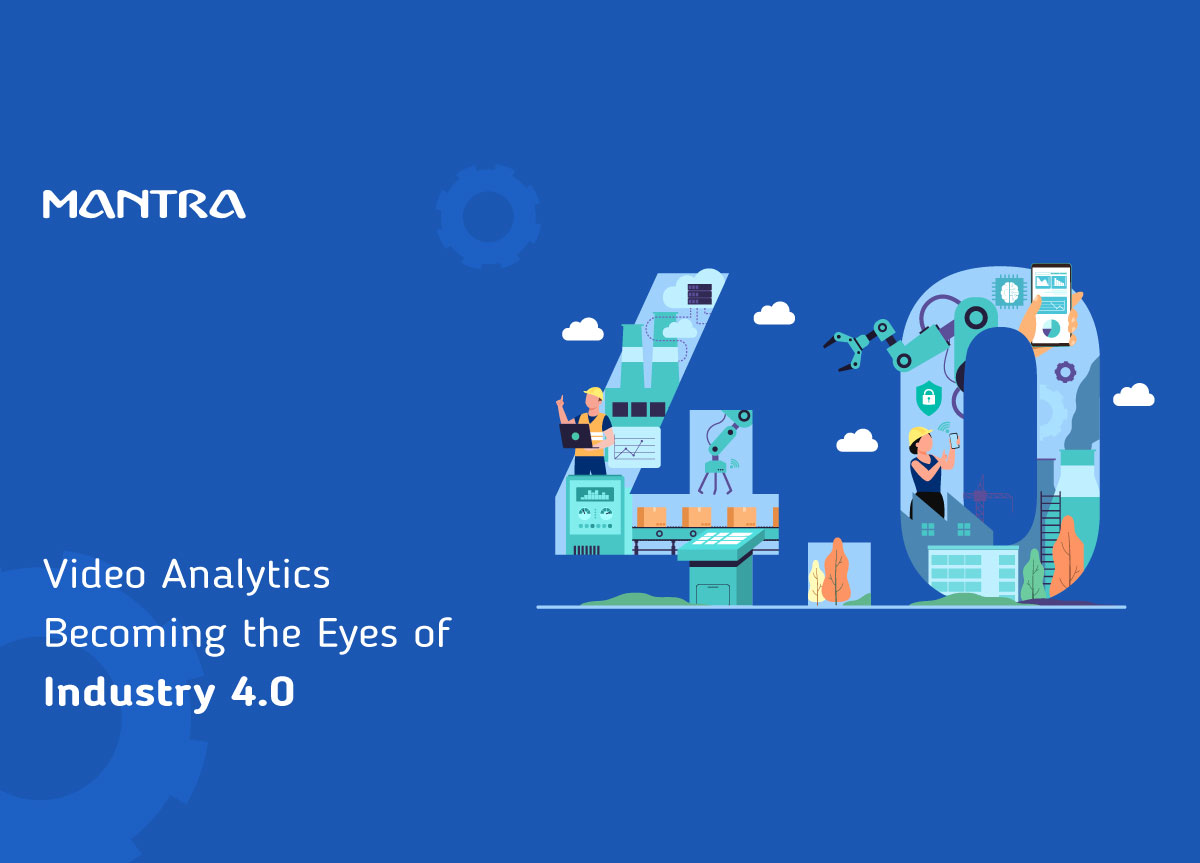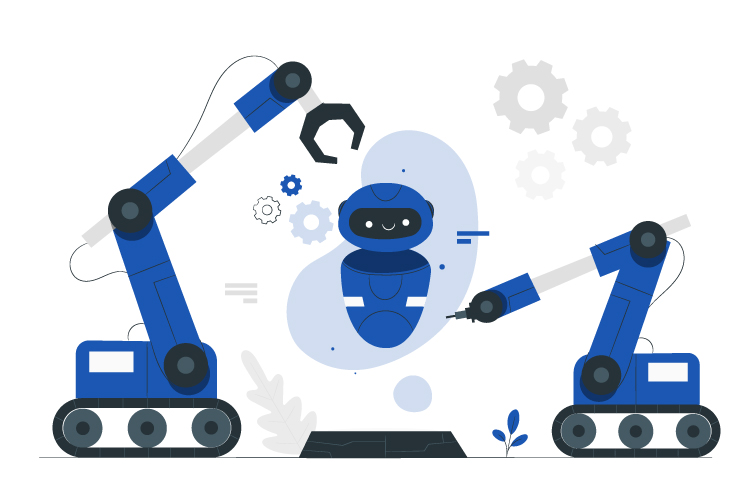
Automation is clockwork, and sensors work now. But what if industrial robotic hands could see like humans do and take action accordingly without much human intervention? That is Industry 4.0 powered by video analytics and AI.
In today's manufacturing, automation means that every task in a process pipeline assigned to a machine or robot must repeat at precise intervals (clockwork) or when the product reaches beneath a machine (when the sensor detects). For example, a stamping machine in a process pipeline must do the stamping process periodically, and the product must pass under it during the exact time of stamping. The time interval is determined by the flow of the process and the timing demands of other operations.
What happens if the time interval fails to follow? (A slight misplacement, unnoticed weir, or tier in a machine can cause it.) What if the sensor fades to detect the object?
The whole process is disturbed, which leads to default product generation.
But what if machines could see as human eyes can? And if they can make decisions on their own? This won't happen, correct?
The fundamental idea of Industry 4.0 is the interconnection between machines, AI-backed analyzing/decision making, and computer vision. Video analytics will have a significant role in Industry 4.0. It enables the automation of visual inspections without human intervention. Simply put, visual analytics will be the eyes of AI.
"The Fourth Industrial Revolution is still in its nascent state. But with the swift pace of change and disruption to business and society, the time to join in is now."
- Gary Coleman, Global Industry and Senior Client Advisor, Deloitte Consulting
So what is it exactly, and how does it automate production?
What is video analytics?
Video analytics is the analysis of digital video signals from the network CCTV and IP cameras in a broad area. Advanced AI analytic algorithm focuses on distinct features to extract actionable insights from raw videos and process and refine them. A video analysis includes:
Image recognition
Face recognition
Geofencing violation detection
Crowd detection
Object detection
Object counting
Fire or hazard detection
Temperature detection
Video analytics in Industry 4.0

Video analytics will play a fundamental role in Industry 4.0 in automating production with less human supervision. However, humans can monitor and control the process from anywhere. Cloud services, Internet of Things, and 5G support will make this possible even faster and more accurately.
"Technologies that are emerging today will soon be shaping the world tomorrow and well into the future – with impacts to economies and to society at large. Now that we are well into the Fourth Industrial Revolution, it's critical that we discuss and ensure that humanity is served by these new innovations so that we can continue to prosper."
- Mariette DiChristina, Editor-in-Chief of Scientific American and chair of the Emerging Technologies Steering Committee
Some of the fundamental tasks video analytics can achieve are listed below:
Accurate production cycles
A closed automatic system monitored and manipulated with data from video analytic systems can fasten the production precisely. To ensure high accuracy and speed, a single camera must be able to support many different use cases. The latest IP cameras can do it. With well-maintained machinery and monitored processes, each product manufactured will be undefective and of top quality. Finally, technology will truly serve humanity.
Monitor beyond what human eyes can see.
With face recognition, object detection, image recognition, and temperature monitoring, visual analytics can monitor the process and alert on any malfunctions.
For example, supervisors get alerts of a product falling off a conveyor, a dirty mop lying on the floor in a food production plant, rising temperature in a particular part of a machine (requiring maintenance), etc. Usually, machines and tools must undergo routine maintenance, but IP cameras can tune to detect even a minute misalignment in parts that need attention. It can always ensure the product or package is in perfect shape and size. Assuring error detection and rejecting faulty products at the early stages of production helps companies save money and time.
Tracking employees and activities 24X7
The technology is insufficient for automation if it is useful only for object and product tracking. Employee tracking is indeed required. Employee tracking with visual analytics can go beyond attendance tracking that already companies facilitate. Face recognition with geofencing tracks employees' location, who they are, and what they do. Furthermore, it can prevent employees or a group of employees from entering a secured and hazardous area.
There will be humanless manufacturing plants in the future where robots handle every process. And, engineers can monitor the plant's work from anywhere, leveraging IoT. In contrast, the robots working on the plant can be restricted within the plant area with a geofenced violation detection network.
No more delays due for maintenance
In a completely automated factory in industry 4.0, every machine and robot will be closely monitored by a video analysis network for evaluating its performance. Even a slight misalignment, temperature rise, and sound variations will be evaluated, and reported for maintenance. The current system detects these malfunctions only during periodic checks. The true meaning of predictive maintenance becomes more evident here.
A plant that can run 24X7 without shifts
This is now science fiction, but with automation, it is possible. Industry 4.0 increases productivity by running without a stop or delay. The future plant will not shut down for maintenance (since it will take care of it before it is needed), shift change (every task is automated, no human to shift), or vacations. Everything happening in the plant will be analyzed by AI, visual analytics, cloud storage, and IoT.
Final thoughts
As we enter the Industry 4.0 era, businesses have already begun implementing automation. Along with IoT and AI, video analytics will form the foundation of Industry 4.0. Today's investment in such technologies will undoubtedly pay off down the road.
Comments